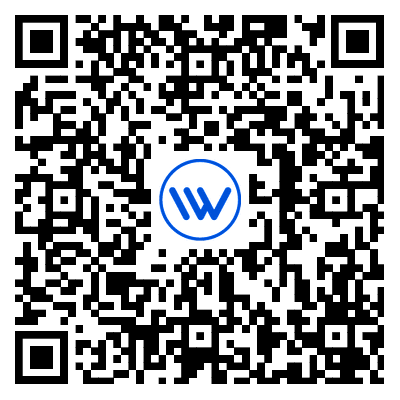How to Choose an IT Monitoring Platform in 2025?
In the digital age, IT systems have become the core pillar supporting enterprise operations. To ensure the stable operation and efficient management of IT systems, selecting an appropriate IT monitoring platform is of critical importance.

I. Main Types of IT Monitoring Platforms
Based on their functions and application scenarios, IT monitoring platforms can be broadly categorized into the following types:
Comprehensive IT Monitoring Platforms: These platforms offer holistic IT monitoring solutions, capable of monitoring network traffic, server performance, application status, and employee behavior, among others. They typically feature real-time data visualization, alerting functions, and customizable reporting, helping enterprises gain intuitive insights into system status and promptly respond to potential issues. Examples include Zabbix, Prometheus, and Nagios.
Cloud Monitoring Platforms: With the widespread adoption of cloud computing, cloud monitoring platforms have emerged. These platforms focus on monitoring resources on cloud platforms, such as virtual machines, containers, and storage, and provide deeply integrated monitoring and management functions with the cloud platform. They assist enterprises in achieving visualization and automation of cloud resource management. Examples include Alibaba Cloud Monitoring, Huawei Cloud Monitoring, and Tencent Cloud Monitoring.
Network Monitoring Platforms: Network monitoring platforms specialize in monitoring the status and performance of enterprise networks, including bandwidth utilization, network latency, and packet loss rates. They typically offer network topology discovery, fault localization, and performance optimization functions, helping enterprises ensure network stability and security. Examples include PRTG and Nagios XI.
Application Performance Monitoring (APM) Platforms: APM platforms focus on monitoring application performance, including response times, throughput, and error rates. They assist enterprises in identifying bottlenecks and issues within applications and conducting performance tuning and optimization. Examples include Dynatrace, AppDynamics, and New Relic.
II. Taking Leviwatch Monitoring as an Example
This article will take Lerwee Monitoring as an example to delve into how to select an IT monitoring platform that suits one’s needs.
Comprehensive and In-Depth Monitoring Capabilities
Lerwee Monitoring employs various protocols and methods, such as AGENT, SNMP, and SSH, to conduct real-time collection and monitoring of storage, network devices, servers, operating systems, middleware, and databases, ensuring that no detail is overlooked. This all-encompassing monitoring capability enables the operations team to grasp the running status of IT systems in real-time, promptly detect, and resolve issues.
Powerful Asset Discovery and Management Capabilities
Lerwee Monitoring boasts robust asset discovery capabilities, automatically scanning and identifying various devices and configuration items within IT systems, including hardware, software, and network devices, and automatically updating information in the Configuration Management Database (CMDB). This simplifies the management of vast IT assets for the operations team, reducing the workload of manual input and updates.
Compatibility and Scalability
Lerwee Monitoring not only supports mainstream IT components and protocols but also is compatible with various open-source software and tools. This means enterprises can fully leverage existing open-source resources for seamless integration with Lerwee Monitoring, achieving more flexible and efficient IT monitoring. Additionally, Lerwee Monitoring provides rich APIs and plugin interfaces, facilitating integration with third-party applications to meet customized enterprise needs.
Real-Time Alerting and Intelligent Operations
Lerwee Monitoring can monitor the status of IT systems in real-time and immediately trigger alerting mechanisms upon detecting anomalies or failures, notifying the operations team for handling. Meanwhile, Lerwee Monitoring offers intelligent alerting functions, classifying and prioritizing alert information through built-in intelligent algorithms, helping the operations team handle alerts more efficiently. Furthermore, Lerwee Monitoring possesses fault self-healing capabilities, automatically attempting to repair common faults.
Digital Business Services
Lerwee Monitoring automatically discovers and generates full-stack, end-to-end business topologies, intelligently constructs relationship models between businesses and IT resources, and quickly locates the impact scope of business system failures. It fosters a tightly integrated management model of IT operations and business services, building a value chain between IT resource management, business lines, operational strategies, and market development to drive business appreciation.
High Security and Data Protection Capabilities
In terms of data security, Lerwee Monitoring employs data encryption transmission and advanced data preprocessing techniques to ensure system and data security. Meanwhile, Lerwee Monitoring provides database backup plans and real-time backup functions for disaster recovery. Business continuity is safeguarded through the deployment of redundant servers and databases.
III. Conclusion
Selecting an appropriate IT monitoring platform is crucial for ensuring the stable operation and efficient management of enterprise IT systems. In this digital age of 2025, Lerwee Monitoring stands out with its comprehensive and in-depth monitoring capabilities, powerful asset discovery and management capabilities, compatibility and scalability, real-time alerting and intelligent operations, ease of use and user-friendly interface, as well as high security and data protection capabilities. Whether for large enterprises or small and medium-sized enterprises, Lerwee Monitoring can be considered as one of the preferred options when selecting an IT monitoring platform. Of course, the selection process should also involve a comprehensive assessment based on the enterprise’s actual needs, budget, and future development plans.
- A Comparative Analysis of Lerwee Network Management and SolarWinds
- Better Monitoring, Here with “7” | Lerwee Monitoring V7.0 Released
- Lerwee NMS vs. Solarwinds NPM: Network Performance Monitoring (Part 1)
- How to replace SolarWinds to ensure enterprise IT security?
- 功能上新 | 6月份乐维产品重点更新功能
- How IT Monitoring Systems Reduce Suspicious Activity Rates for Enterprises

